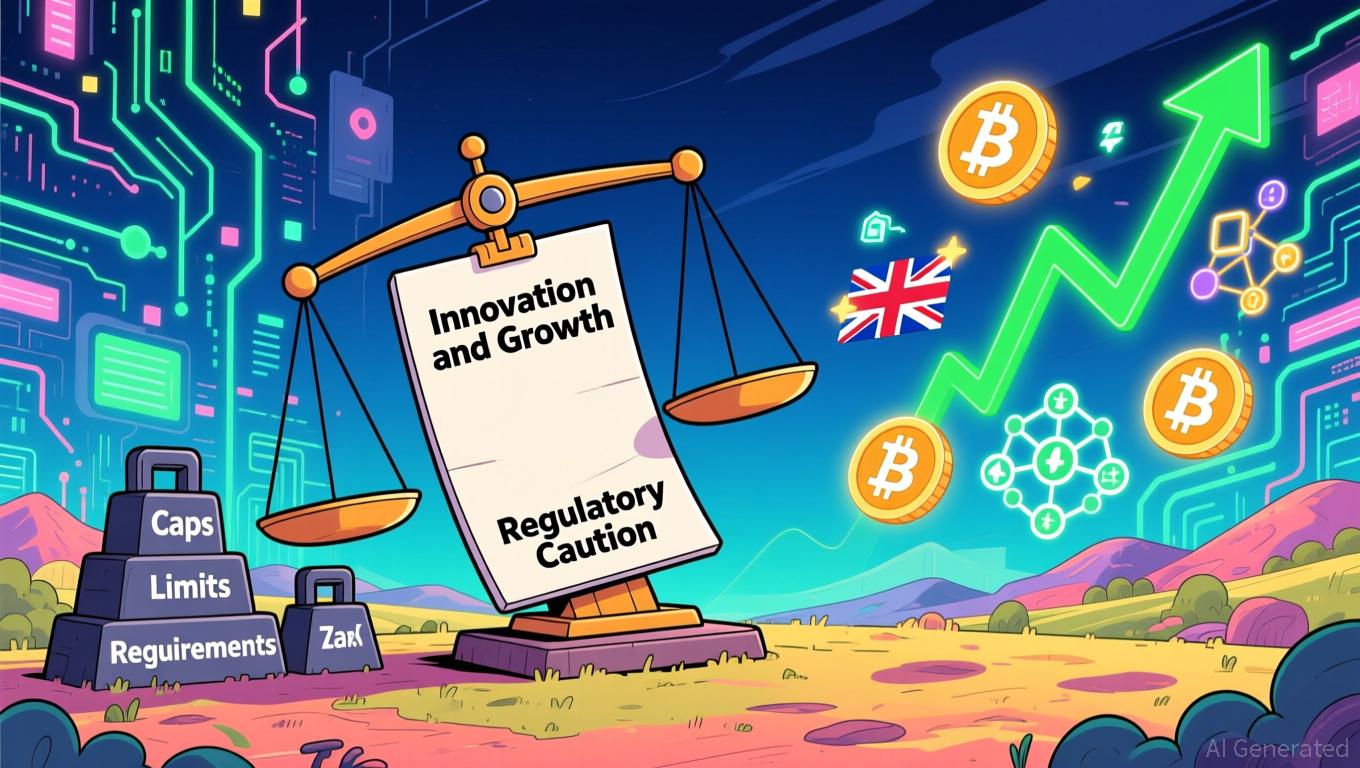U.S. Debt Fluctuations Surge Amid AI-Driven Borrowing Growth and Fed Faces Fiscal Uncertainty
- U.S. Debt Volatility Index hits one-month high in November, reflecting market anxiety amid government shutdown resolution and fiscal risks. - AI infrastructure debt surges 112% to $25B in 2025, driven by tech giants’ $75B in bonds for GPU/cloud projects, raising overleveraging concerns. - Fed faces mixed signals: October job losses push December rate cut odds to 68%, while gold/silver rise 2-3% as investors seek safe havens amid fiscal/geopolitical risks. - Delayed economic data from shutdown complicates
The U.S. Debt Volatility Index reached its highest point in a month at the start of November, highlighting ongoing market unease even after the government averted a shutdown. Although Congress agreed on a funding deal to keep federal agencies running, investors remained cautious about larger fiscal threats, such as the rapid increase in AI infrastructure debt and weak economic indicators that could postpone interest rate reductions by the Federal Reserve.

The shutdown, which persisted for more than a month, interrupted the release of vital economic statistics, leaving both policymakers and investors without a clear picture of economic conditions.
At the same time, the AI sector’s rapid growth is driving a sharp increase in data center borrowing, which has soared 112% year-over-year to $25 billion projected for 2025. This growth is fueled by large-scale projects needing advanced GPUs and cloud systems, with leading tech companies like
The Federal Reserve’s policy outlook remains uncertain due to conflicting economic signals.
Gold advanced 2% to $4,079.78 per ounce, while silver gained nearly 3%, as investors sought safety amid fiscal and geopolitical worries. Ole Hansen from Saxo Bank observed that higher bond yields reflected “fiscal concerns” rather than inflation, a pattern that has benefited precious metals.
Looking forward, markets remain divided over the dollar’s strength and the Fed’s next moves. Although reopening the government will restore the flow of economic data, delays in October’s jobs and inflation reports may hinder precise policy adjustments. Analysts caution that the combination of debt-fueled AI infrastructure expansion and shaky fiscal fundamentals could keep volatility elevated. For now, the rise in the Debt Volatility Index signals a market still wrestling with uncertainty—a clear indication that resolving the shutdown has not eased deeper worries about U.S. debt and economic stability.
---
Disclaimer: The content of this article solely reflects the author's opinion and does not represent the platform in any capacity. This article is not intended to serve as a reference for making investment decisions.
You may also like
ALGO Drops 5.28% in 24 Hours Following Passkey Breakthrough and Market Volatility
- Algorand's ALGO token fell -5.28% in 24 hours on Nov 13, 2025, amid broader crypto market volatility and macroeconomic concerns. - The Algorand Foundation launched Liquid Auth, a decentralized passkey manager integrated with Pera Wallet, promoting self-custody and privacy in Web3 identity management. - Despite technological innovation, ALGO's multi-timeframe declines (-51.24% in 1 year) highlight liquidity risks and bearish momentum as traders react to market conditions. - Technical analysis shows ALGO b
HBAR Dips On Grayscale ETF Delay: Can Canary Swoop In?

Airdrop Combines Equities and Internet Memes to Draw in Individual Investors
- Datavault AI (DVLT) and Scilex (SCLX) will airdrop Dream Bowl 2026 meme coins to shareholders on December 8, aiming to attract retail investors through stock-meme fusion. - The one-meme-per-share distribution triggered a 4.91% pre-market stock surge for DVLT , while short sellers face mandatory meme coin delivery obligations post-November 24 ex-dividend date. - The initiative builds on a $150M Bitcoin partnership with Scilex, leveraging blockchain trends and aligning with broader market optimism for cryp
UK’s Conservative Approach to Stablecoin Regulation May Leave It Lagging Behind International Competitors
- UK regulators propose strict stablecoin caps (£20k/individuals, £10m/businesses) and 60% UK debt backing to mitigate risks, sparking concerns over stifled innovation. - Critics argue 40% unremunerated central bank deposit requirement threatens UK competitiveness against US and Singapore's more flexible frameworks. - Global rivals like the US (GENIUS Act) and EU (MiCAR) advance stablecoin adoption, while UK's delayed finalization risks losing first-mover advantage in digital finance. - Industry leaders ur
